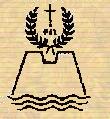|
THE YEAR 300 - MONASTICISM
As
the persecution of the Catholic Church waned, the early Christians
embraced the alternative to martyrdom: this is monastic life.
There
is no such thing as different monastic schools: what seems different
among the monastic movements is only the degree of intensity in the
way of life. While St. Benedict's rule is for ordinary peasants
beginning in the spiritual life, St. John Climacus' rule is for
hard-headed monks long living the monastic life.
Around
this era, monasticism began to flourish near Jerusalem and Jericho.
And, essentially, monasticism is "living alone together".
And so monastic practices were either highly alone and less together
for the advanced, half living alone and half together for the middle
way, and more together and rarely alone for beginners in the
monastic life. In fact, St. Benedict's rule legislated community
life and discouraged going to the eremitical life without intense
preparation.
During
this period, we had the LAURAS, a monastic community wherewith monks
lived half way between the solitary life and community life. They
lived alone in their hermitages but met together for liturgy. During
this era, the Church was still fervent.
Because
of the absence of persecution, monastic life spread in every
province of the Roman world--Asia Minor, India, Persia and Ethiopia.
In no time, it reached the West--Italy, the island of the Adriatic,
Gaul, Spain, and the British Isles.
The
Armenian monks wore the first definite monastic habit. The earliest
monastic rule was written by St. Pachomius and all monastic orders
follow the general norms of his rule. The community of St. Anthony
is resembled more by the Carthusians today.
The
monastic communities of St. Basil were like small cities with whole
families living the monastic life together. St. Martin of Tours,
Bishop, organized his diocese along quasi-monastic lines; his rule
was as mild as St. Benedict's. St. Augustine, Bishop, organized his
diocesan priests into monastic communities.
Obviously,
from the beginning, monasticism was fully developed because its
norms are found in Scriptures, in the hidden life of Christ.
(updated
03-11-02) | 